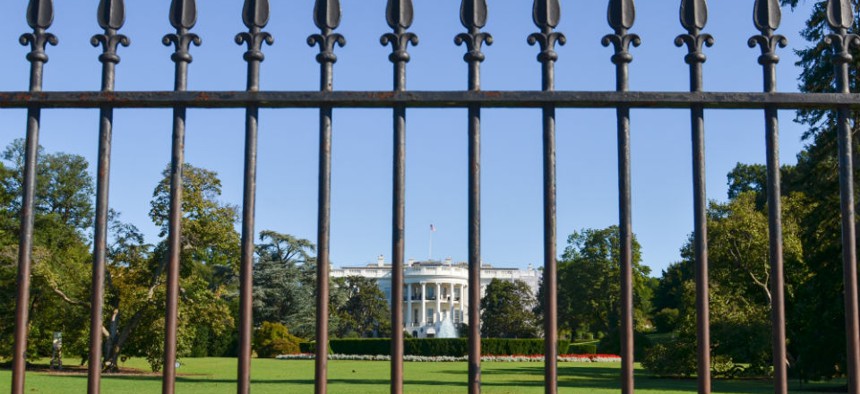The New White House Fence Could Wind Up Being Really, Really Tall
An independent panel has a few recommendations for the Secret Service about how to fix the presidential perimeter.
A new review of the Secret Service has found that the agency's problems run deeper than White House fence-jumpers. The protective service, an independent panel reported on Thursday, could use more and better-trained officers, better technology, and, most important, leadership that is not Julia Pierson.
But the fence, the one scaled by a mentally ill Iraq war veteran in September, still matters, and it can't stay as is. The panel, which was composed of four former administration officials—two who served under Obama, two under the latest Bush—"believes strongly that the fence around the White House needs to be changed as soon as possible to provide better protection." So, what should the new-and-improved fence guarding the seat of executive power look like?
The panelists "decline to say precisely what the optimal new fence should look like." But you can bet it's going to much more difficult to climb, which the reviewers say will save Secret Service officers from having to decide whether to shoot someone who does make it over. Here's what they have in mind.
The fence should serve its purpose as a protective perimeter, but still allow tourists to comfortably gawk at the executive mansion:
Importantly, designers of the new fence must balance security concerns with the long and storied tradition of the White House being the "People's House." These historical, symbolic, and aesthetic factors deserve consideration, but ultimately they should not be permitted to delay or prevent a fence that could save lives.
The fence should also be bigger:
For sure, the fence must be taller; even an increase of four or five feet would be materially helpful.
It should also be impossible to climb:
Horizontal bars, where climbers can easily place feet or hands, should be eliminated or placed where they provide little assistance. The top of the fence can also be manipulated in certain ways—such as including curvature outward at the top of the fence—to make scaling it much more difficult for most.
The panelists write that all of these adjustments "can be made without diminishing the aesthetic beauty or historic character of the White House grounds." Because nothing says aesthetic beauty like a supremely tall fence that's bent at the top.
(Image via Orhan Cam / Shutterstock.com)




